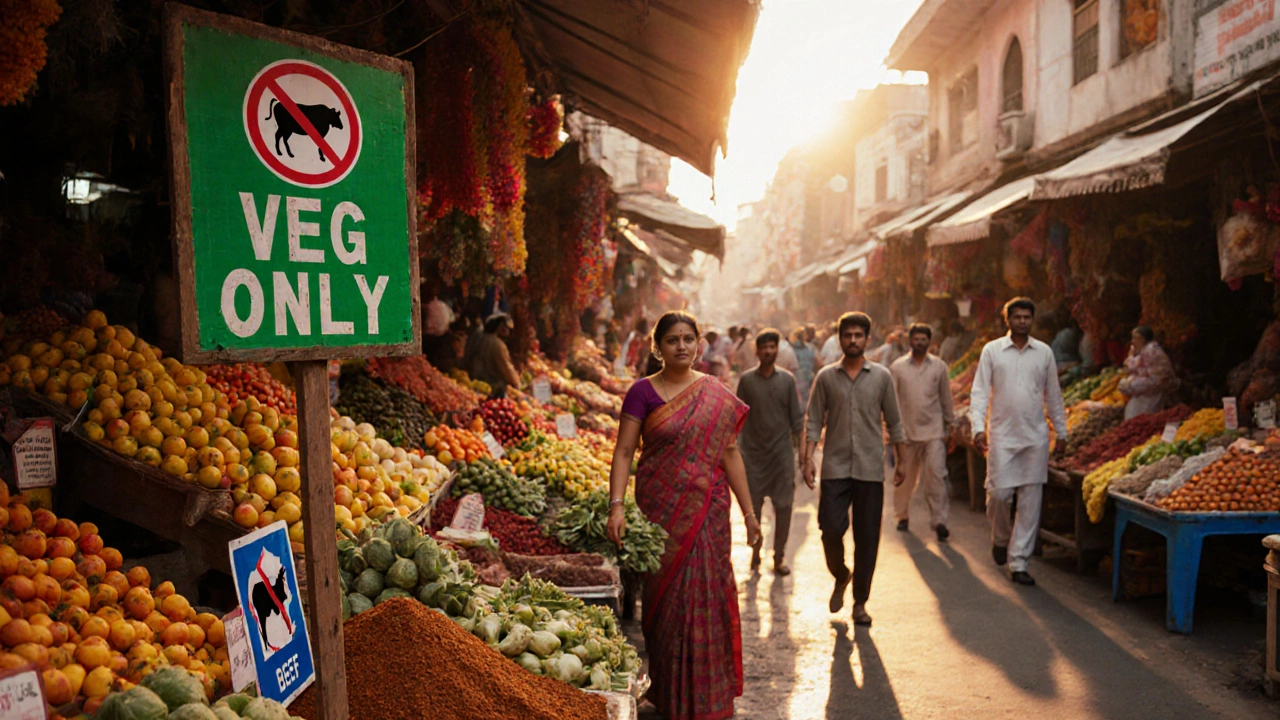
India’s Food Taboos: What Not to Eat Across Regions & Religions
Explore India's food taboos across religions and regions, learn what not to eat, and get practical tips for travelers to respect local customs.
When we talk about dietary customs India, the deeply rooted food practices shaped by religion, geography, and generations of tradition. Also known as Indian food traditions, these customs aren’t just about what’s on the plate—they’re about when, why, and how food is eaten. In India, food isn’t separated from faith. A Tamil family might fast on Ekadashi and break it with rice and lentils at dawn. A Gujarati household might eat only vegetarian meals because of Jain influence. A Punjabi farmer might start his day with ghee-laced parathas for energy, while a Bengali woman prepares fish curry for Durga Puja because it’s tied to ancestral rites. These aren’t random habits. They’re living systems passed down, not by books, but by hands in the kitchen.
Vegetarianism in India, a practice followed by over 30% of the population, mostly due to religious and ethical beliefs. Also known as plant-based eating in Hinduism, it’s not a trend—it’s a norm in many homes, especially in Gujarat, Rajasthan, and Tamil Nadu. But it’s not just about avoiding meat. It’s about what you include: lentils, dairy, seasonal vegetables, and grains like millet and rice, chosen for balance, not just taste. Then there’s the Ayurvedic diet, a system of eating based on body type, season, and digestive rhythm. Also known as dosha-based nutrition, it tells you to eat warm, cooked food in winter, avoid heavy dairy if you’re a Kapha type, and skip raw salads in monsoon. This isn’t ancient magic—it’s practical advice that still guides millions daily. And let’s not forget fasting. From the 24-hour fasts of Karthigai Deepam in Tamil Nadu to the month-long Navratri fasts in Gujarat, food pauses are part of spiritual rhythm. These aren’t about deprivation. They’re about resetting the body, honoring the divine, and connecting with community.
What you eat in India depends on where you live, who you pray to, and what season it is. A coastal Kerala family eats fish every day. A hillside Himachali household relies on buckwheat and dairy. A city worker in Mumbai might skip breakfast to follow a Jain fast, then grab a vada pav on the way to work. These aren’t contradictions—they’re layers of a culture where food is never just fuel. Below, you’ll find real stories, clear explanations, and surprising truths about what Indians eat, why they eat it, and how these habits still shape lives today.

Explore India's food taboos across religions and regions, learn what not to eat, and get practical tips for travelers to respect local customs.